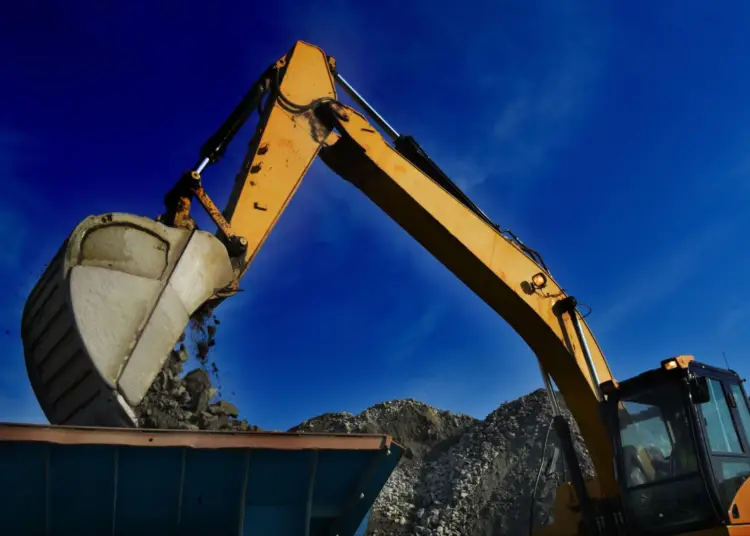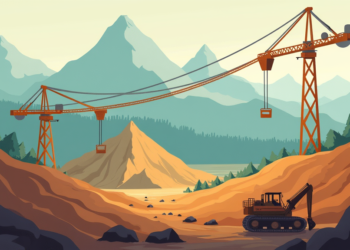Canadian mining regulations play a pivotal role in shaping the landscape of the mining industry across the nation. These regulations are governed by a complex framework of federal, provincial, and territorial laws that ensure mining compliance in Canada. From mineral rights in Canada to environmental mining laws, the governing bodies prioritize not only the economic benefits of mining but also the protection of ecosystems and Indigenous rights. An essential aspect of these regulations involves Indigenous consultation mining practices, which aim to promote collaboration between mining companies and Indigenous communities. Understanding these intricate regulations is crucial for stakeholders seeking to navigate the Canadian mining landscape effectively.
The landscape of mining oversight in Canada is characterized by a detailed regulatory framework that encompasses various legal aspects. Mining governance involves compliance with numerous laws that address mineral rights, environmental protection, and the rights of Indigenous populations. Stakeholders must consider factors such as mining compliance and the responsibilities of both provincial and federal governments. The regulatory environment also emphasizes the significance of sustainable practices and responsible resource management, ensuring that mining activities align with Canada’s environmental commitments. As such, familiarizing oneself with these regulations is essential for anyone engaged in the mining sector.
Understanding Canadian Mining Regulations
Canadian mining regulations are a critical aspect of the industry, as they ensure that mining operations are conducted in a safe, environmentally responsible, and legally compliant manner. The framework of these regulations includes federal, provincial, and territorial laws that collectively govern various aspects of mining activities, from exploration to extraction. Mining companies must navigate this complex regulatory landscape, which is designed to protect both the environment and the rights of local communities, including Indigenous peoples.
To successfully operate within this framework, companies must be aware of their obligations under multiple acts, including the Canadian Environmental Protection Act and the Impact Assessment Act. These regulations not only dictate how mining operations should be conducted but also establish protocols for environmental assessments and ongoing monitoring. By adhering to these laws, mining companies can minimize their environmental impact while ensuring compliance with government standards, which is crucial for maintaining their licenses and attracting investment.
Mining Rights in Canada: What You Need to Know
In Canada, mining rights are essential for anyone looking to explore or extract minerals from the land. These rights typically pertain to the minerals located beneath the surface, whereas surface rights refer to the ownership of the land itself. Understanding the distinction between these rights is vital for anyone involved in the mining sector, as both sets of rights must be negotiated and acquired to avoid potential disputes. The legal framework surrounding mining rights ensures that mineral exploration is conducted fairly and transparently.
Furthermore, the process of acquiring mining rights often involves engaging with both surface rights owners and regulatory bodies. Disputes can arise, but Canadian mining laws generally provide mechanisms to resolve these conflicts amicably. It is also important for mining companies to be aware of local regulations regarding Indigenous consultation, as many land packages may be held by Indigenous groups, necessitating open communication and collaboration to ensure compliance with both legal and ethical standards.
Environmental Laws Impacting Mining Operations
Environmental mining laws in Canada are designed to safeguard natural resources and ecosystems from the potential negative impacts of mining activities. These laws require mining companies to conduct thorough environmental assessments before commencing any project, ensuring that potential risks are identified and mitigated. Key regulations include the Fisheries Act and the Species at Risk Act, which impose strict guidelines on waste management and habitat preservation. The enforcement of these laws demonstrates Canada’s commitment to sustainable mining practices.
Additionally, ongoing compliance with environmental regulations is mandatory throughout the lifespan of a mining project. Companies are expected to implement effective waste management strategies and adhere to discharge prohibitions to protect water quality and biodiversity. This commitment to environmental stewardship not only helps preserve Canada’s rich natural landscapes but also enhances the industry’s reputation, making it more attractive for investors who prioritize sustainability in their portfolios.
Indigenous Consultation in Mining Projects
The consultation with Indigenous communities is a fundamental aspect of mining projects in Canada. As per the principles outlined in the United Nations Declaration on the Rights of Indigenous Peoples, mining companies are required to engage with Indigenous groups to ensure their rights and interests are respected. This involves open lines of communication and collaboration throughout the planning and operational phases of mining projects, particularly in areas where Indigenous land rights may be affected.
Failure to adequately consult with Indigenous communities can lead to significant legal and reputational risks for mining companies. Provinces like British Columbia have established specific acts, such as the Declaration on the Rights of Indigenous Peoples Act, to further formalize the consultation process. By fostering strong relationships and prioritizing the input of Indigenous groups, mining companies can not only comply with legal requirements but also contribute positively to the communities they impact.
Federal and Provincial Mining Regulations: A Dual Approach
In Canada, the regulatory landscape for mining is characterized by a dual approach involving both federal and provincial regulations. While the provinces primarily oversee the exploration and extraction of mineral resources, the federal government plays a crucial role in areas such as environmental protection and Indigenous rights. This collaborative framework ensures that mining activities are conducted responsibly, balancing economic development with environmental stewardship and social responsibility.
Mining companies must navigate this dual regulatory environment carefully, as failing to comply with either federal or provincial regulations can result in significant penalties or project delays. Understanding the specific requirements imposed by both levels of government is essential for successful project planning and execution. Moreover, companies often need to engage with multiple stakeholders, including local communities and regulatory agencies, to ensure comprehensive compliance and foster positive relationships.
Health and Safety Regulations in Canadian Mines
Health and safety regulations are paramount in the Canadian mining industry, where workers face unique risks and challenges. Each province has established its own occupational health and safety laws tailored to the mining sector, ensuring that workers are protected from hazards associated with mining operations. Compliance with these regulations is not only a legal requirement but also a critical aspect of maintaining a safe work environment and preventing accidents.
Mining companies are required to implement comprehensive safety programs, conduct regular training sessions, and maintain safety equipment to protect their workforce. These proactive measures not only safeguard the health of employees but also enhance overall productivity and morale. Furthermore, adherence to health and safety regulations can improve a company’s standing within the industry, making it more attractive to potential investors and partners.
Navigating the Regulatory Framework for Mineral Rights
Navigating the regulatory framework for mineral rights in Canada can be complex, given the various laws and regulations at play. Mineral rights typically reside with the Crown, whether federally or provincially, and acquiring these rights requires an understanding of the specific legislative requirements in the relevant jurisdiction. Mining companies must engage in thorough research and due diligence to ensure they comply with all applicable laws when seeking to acquire mineral rights.
In addition to understanding the ownership of mineral rights, companies must also be aware of the necessary permits and licenses required for exploration and extraction activities. Each province has its own regulatory body overseeing these processes, and companies must ensure they follow the correct procedures to avoid legal complications. Familiarity with the regulatory framework not only facilitates smoother operations but also enhances a company’s reputation within the industry.
Investing in Canadian Mining: Legal Considerations
Investing in Canadian mining requires a comprehensive understanding of the legal landscape governing the sector. Investors must be aware of the various laws related to mining compliance, mineral rights, and environmental regulations to make informed decisions. Understanding these legalities is crucial for minimizing risks and ensuring that investments align with regulatory requirements, particularly in a sector known for its complexities.
Moreover, potential investors should consider the implications of foreign investment restrictions, which may vary by province. Engaging with legal experts and understanding the specific requirements of each jurisdiction can greatly enhance the investment process. By staying informed about the legal considerations in Canadian mining, investors can better navigate the complexities of the industry and identify lucrative opportunities.
The Role of Federal Government in Mining Regulations
The federal government plays a significant role in shaping mining regulations in Canada, particularly regarding environmental protection and resource management on federal lands. While provinces primarily regulate mining activities, federal legislation comes into play for projects that could impact the environment, Indigenous rights, or public health. Understanding the federal government’s involvement is essential for mining companies as it affects their operational processes and compliance requirements.
Federal regulations often require mining projects to undergo rigorous environmental assessments, ensuring that potential impacts are evaluated before any activities commence. The federal government also oversees specific minerals, such as uranium, which require additional regulatory scrutiny. By comprehending the federal role in mining regulations, companies can better prepare for the complexities involved in securing approvals and maintaining compliance throughout their project lifecycles.
Frequently Asked Questions
What are the key aspects of mining compliance in Canada?
Mining compliance in Canada involves adhering to a complex framework of federal, provincial, and territorial regulations. Key aspects include obtaining necessary permits, conducting environmental assessments, and following health and safety laws specific to mining operations. Compliance ensures that mining companies operate legally while minimizing environmental impact and respecting Indigenous rights.
How do Indigenous consultation processes impact mining rights in Canada?
Indigenous consultation is a critical component of mining rights in Canada. The federal government mandates consultations with Indigenous groups to align mining activities with their rights and interests. This process ensures that Indigenous communities are informed and can provide input on projects affecting their lands, following the principles set out in the United Nations Declaration on the Rights of Indigenous Peoples.
What are the environmental mining laws that Canadian companies must follow?
Environmental mining laws in Canada include various federal acts such as the Canadian Environmental Protection Act and the Impact Assessment Act. These laws require mining companies to conduct environmental assessments, manage waste responsibly, and implement mine closure plans to protect ecosystems and communities from the impacts of mining activities.
What role do provincial governments play in regulating mineral rights in Canada?
Provincial governments are responsible for regulating mineral rights in Canada. They govern the exploration and extraction of minerals through ownership, administration, and legislative authority over natural resources. Each province has its own set of mining regulations, which must be followed by mining companies operating within their jurisdictions.
How do mining rights and surface rights differ in Canada?
In Canada, mining rights pertain to the minerals located beneath the surface, while surface rights refer to the land on which mining activities occur. To explore and develop minerals, both mining rights and surface rights must be obtained, often requiring negotiation between the mineral rights holder and the surface rights owner.
What are the main federal laws affecting mining operations in Canada?
Key federal laws affecting mining operations in Canada include the Canadian Environmental Protection Act, the Fisheries Act, and the Species at Risk Act. These laws govern various aspects of mining, including environmental protection, waste management, and the safeguarding of wildlife, ensuring that mining operations comply with national standards.
What are the health and safety regulations applicable to Canadian mines?
Health and safety regulations in Canadian mines include both general occupational health laws and industry-specific regulations. These laws are enforced by provincial workers’ compensation boards, which ensure that mining companies provide a safe working environment and comply with safety standards to protect workers from hazards associated with mining.
How does the federal government participate in mining regulation in Canada?
The federal government participates in mining regulation by enacting laws that apply to federal lands and ensuring compliance with national environmental standards. While provinces primarily manage mineral rights, the federal government steps in for projects that require federal oversight, especially those involving Indigenous lands or significant environmental impacts.
What is the significance of the Impact Assessment Act in Canadian mining?
The Impact Assessment Act is significant in Canadian mining as it requires comprehensive assessments of potential environmental, social, and economic impacts before mining projects can proceed. This act ensures that mining operations consider their effects on ecosystems, communities, and Indigenous rights, promoting sustainable resource development.
What steps must be taken for a mining project to comply with Canadian regulations?
To comply with Canadian mining regulations, a project must undergo several steps: securing mining rights, conducting an environmental assessment, obtaining necessary permits and approvals, engaging in Indigenous consultations, and adhering to health and safety standards throughout the mining operation.
| Key Points | Details |
|---|---|
| Regulatory Framework | Canadian mining is governed by federal, provincial, and territorial laws, with provinces primarily overseeing regulations. |
| Mining Rights | Mining rights pertain to minerals beneath the surface, while surface rights are about the land itself. Both rights are needed for exploration. |
| Key Regulations | Mining companies must comply with numerous federal acts, including the Canadian Environmental Protection Act and the Fisheries Act. |
| Environmental Protection | Ongoing requirements include environmental assessments, effluent discharge prohibitions, and mine closure plans. |
| Federal Involvement | Federal laws apply to mineral projects on federal land and trigger environmental assessments for mine applications. |
| Provincial Responsibilities | Provinces regulate mineral exploration and extraction and manage public land and mineral rights. |
| Territorial Regulations | Territorial governments regulate mineral rights, but in Nunavut, rights are still under federal regulation. |
| Indigenous Consultation | The federal government aligns laws with Indigenous rights as per the UN Declaration, requiring consultation in land matters. |
| Mineral Rights Ownership | Mineral rights on public lands are generally held by the Crown, with provincial governments managing these rights. |
| Health and Safety Regulations | Mines must comply with occupational health and safety laws, administered by provincial boards. |
Summary
Canadian mining regulations are essential for maintaining a structured and safe environment for mining operations in Canada. The complex framework of laws at federal, provincial, and territorial levels ensures that both environmental protection and Indigenous rights are respected while promoting investment in the mining sector. Compliance with these regulations is crucial for the sustainability and success of mining projects, making it imperative for companies to stay informed about their legal obligations and rights.













